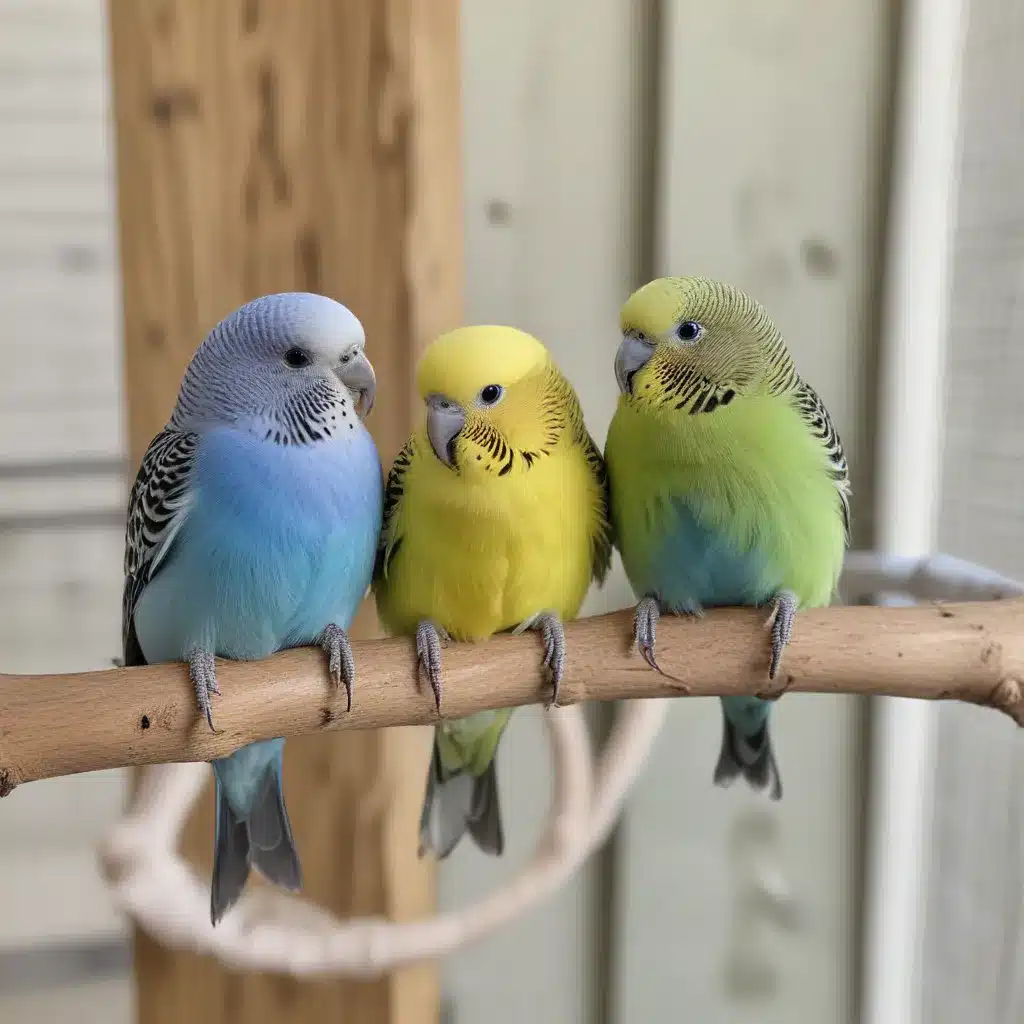
Avian Escapees
As an experienced avian caretaker, I’ve encountered my fair share of avian escapees over the years. While these situations can be stressful, it’s important to understand the common causes and take proactive measures to prevent such incidents.
Escaped Bird Species
The most commonly escaped birds are small- to medium-sized parrots and parakeets, such as budgies, cockatiels, and lovebirds. These birds are often kept as pets and may accidentally fly out an open door or window. Larger psittacines, like macaws and cockatoos, can also escape their enclosures, though this is less common. Occasionally, exotic species like toucans or turacos may escape from private collections or zoos.
Avian Escape Causes
There are several reasons why birds may escape their enclosures. Improper cage design, poor fit of doors and latches, and bird-proofing oversights can all contribute to avian escapees. Additionally, startling events, such as loud noises or the presence of predators, can cause birds to panic and fly away. Boredom, lack of enrichment, and behavioral issues may also lead some birds to intentionally try to escape their confinement.
Avian Escape Prevention
The best way to prevent avian escapees is to ensure your bird’s enclosure is secure and escape-proof. Use sturdy, well-fitted cages with secure latches and doors. Provide ample space, perches, and toys to keep your feathered friend mentally stimulated and content. Regularly inspect the enclosure for any potential weak points. When birds are out of their cage for supervised time, be vigilant about keeping doors and windows closed. Training your bird to step up and return to their cage on command can also help mitigate escape risks.
Budgie Snugglers
While some birds may escape their confines, there are also countless avian enthusiasts who cherish the companionship of their feathered friends. These “budgie snugglers,” as I’ve come to call them, express their devotion through providing their pets with a safe, enriching environment.
Budgie Behavior and Personality
Budgies, also known as parakeets, are social, playful birds with distinct personalities. In the wild, they live in large flocks, communicating through a variety of chirps, whistles, and body language. Captive-bred budgies have been selectively bred to be more docile and tolerant of human interaction, making them popular pets.
Budgie Care and Handling
Proper budgie care involves providing a suitably sized cage, a varied diet of seeds, pellets, fruits, and vegetables, as well as regular veterinary check-ups. Budgies also require daily interaction and opportunities for out-of-cage exercise. Gentle, positive reinforcement-based training can help build trust and strengthen the bond between a budgie and their human companion.
Budgie Socialization
Budgies are highly social birds and thrive when they have the opportunity to interact with their owners. Budgie snugglers often hand-tame their birds, teaching them to step up onto a finger and enjoy gentle petting and cuddling. Providing a variety of toys, perches, and hiding spots can also enrich a budgie’s environment and encourage natural behaviors.
Avian Habitats
Whether a bird is a beloved pet or a wild escapee, it’s crucial to understand the specific habitat requirements to ensure their well-being.
Avian Enclosure Design
For captive birds, the enclosure should mimic their natural environment as closely as possible. This includes providing ample space, multiple perches at varying heights and diameters, and enrichment items like foraging toys and bathing dishes. The enclosure should also be well-ventilated, maintain the appropriate temperature and humidity, and be secure to prevent escapes.
Outdoor Avian Environments
For birds that have escaped or are intended to be released, it’s essential to consider the local ecosystem and climate. Providing suitable food sources, water, and shelter in the form of dense vegetation or nesting boxes can help increase their chances of survival. Monitoring the bird’s health and behavior and consulting with wildlife rehabilitation experts is also recommended.
Indoor Avian Environments
In some cases, such as with sick or injured birds, an indoor environment may be necessary. Here, the focus should be on creating a stress-free, temperature-controlled space with minimal disturbances. Appropriate lighting, perches, and hiding spots can help the bird feel secure and encourage natural behaviors.
Avian Welfare
Ensuring the overall well-being of captive and wild birds is a top priority for any responsible avian caretaker.
Avian Nutritional Needs
A balanced, species-appropriate diet is crucial for a bird’s health. This may include a combination of high-quality pellets, fresh fruits and vegetables, and occasional treats. Providing clean, fresh water at all times is also essential.
Avian Health and Veterinary Care
Regular veterinary check-ups and prompt treatment of any medical issues are vital for captive birds. Monitoring for signs of illness, such as lethargy, loss of appetite, or abnormal droppings, and addressing them quickly can help prevent more serious problems.
Avian Enrichment and Stimulation
Keeping birds mentally and physically stimulated is key to their well-being. Offering a variety of toys, perches, and opportunities for foraging and exploration can help prevent boredom and stress. Introducing new items or rearranging the enclosure can also provide additional enrichment.
As an experienced avian caretaker, I understand the joys and challenges of caring for these remarkable creatures. Whether you’re dealing with an escaped bird or cherishing the companionship of a beloved budgie, prioritizing their welfare and respecting their natural needs is paramount. By working together to prevent avian escapees, providing enriching environments, and promoting species conservation, we can ensure a brighter future for birds of all kinds. For more information on avian care and resources, be sure to visit Mika Birds Farm – your one-stop-shop for all things feathered and fabulous.


